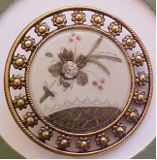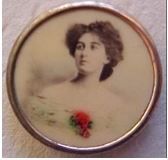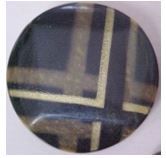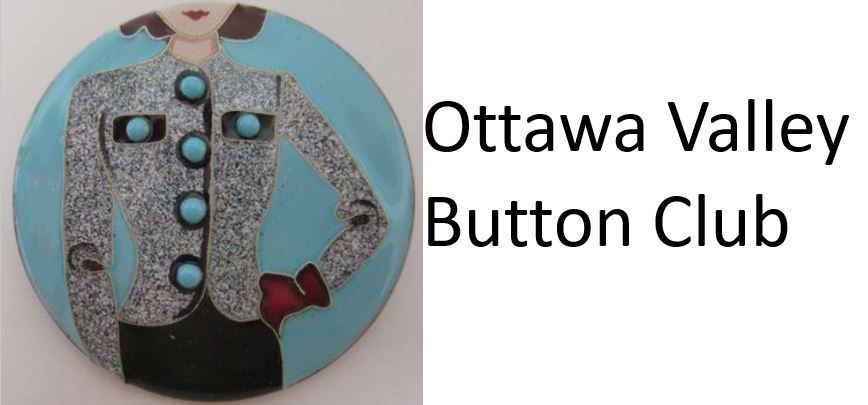The following are notes gleaned from our excellent discussion of Celluloid Buttons held on January 25th, 2009. Evelyn Davis moderated. Rather than give a complete review, which you can read in other button publications, we have chosen a number comments, hints and information we highlighted during the presentation.
Collecting Celluloid buttons
Collecting Celluloid buttons is popular with new collectors (as well as seasoned ones).
A few years ago, they were inexpensive, and even though the prices have risen, they remain reasonably priced. See eBay Celluloids listings for Celluloid Buttons) Many interesting examples can be found in flea markets and garage sales – “ask and ye shall find!”
All Celluloid or Specializing: For those of us who can’t find a button we don’t want to keep, we recommend you do specialize when collecting celluloids. If you select a type: Wafer, Tightops etc, then you will have an exciting: “button hunt”, which will prove challenging.
Rules
- Rule Number One: Do not store buttons in a jar. (Undo the lid and you will smell the camphor)
- Rule Number Two: Celluloid is flammable. Be careful when testing a button with a hot needle.
Celluloid degradation (See accompanying document on History and composition)
Celluloid buttons are made of organic compounds and therefore can breakdown and disintegrate. The most common type of celluloid degradation is caused by camphor gradually working its way out of the product. Extreme heat will contribute to this process. (Remember this, in the summer if you keep your buttons in a sunlit room).
Because these buttons are fragile, the shanks will often break off easily. When removing a button from a storage card, never pull the button, and be care removing old pipe cleaners when removing buttons from cards.
Unfortunately, once a button begins to disintegrate, if it a process that is impossible to reverse. If you have a button that looks ‘sick’ throw it out, for it will spread to others!!!
Canadian Celluloid Button Manufacturing: (Compiled by Louise Daignault)
Celluloid buttons were manufactured in Canada from the early 1910s. In Montreal, Dominion Button Works (which became Canadian Buttons Limited in 1918) was advertizing celluloid buttons for suits and costumes in 1913. This company continued to make celluloid buttons for women’s wear until the mid-1950s. Some of their ads pointed out the high grade and novelty patterns of these buttons.
Smaller companies in Montreal also made celluloid buttons, most importantly the Stein Button Company, from about 1920 to 1958.
In Berlin/Kitchener, the Forsyth-Kimmel Co. Ltd. made celluloid buttons for close to 10 years, starting about 1913. George Schnarr probably made "Pyralin" (French ivory) buttons in the 1930s and 1940s. Finally, in Toronto, at least six companies manufactured celluloid buttons. The largest production no doubt came from Button Sales Limited which made them from the early 1930s to 1960.
The quantity of celluloid buttons produced was always very small compared to that of other types of buttons. For example, in 1924, only 31,000 gross of celluloid buttons were made compared to 468,000 gross of vegetable ivory buttons and 205,000 gross of fresh water pearl buttons. The production increased to close to 200,000 gross in 1934, but this did not represent more than about 11 per cent of the total value of button production in Canada. In 1938, buttons of other plastic materials already accounted for 25 per cent of the value of production, and steel and brass buttons were now made in much larger quantities than celluloid buttons. By the mid-1950s very few celluloid buttons were made.
Collections
Evelyn Davis, Micheline Gravell, Louise Daignault and Susie Smith presented buttons of interest. Each member will be scan some of their favourites, and we will continue to add them to this site.




